Conny Waters – AncientPages.com – As many as 25,000 statues of ancient Egyptian deities and Ushabti figurines crafted from faience have been revealed to the public for the first time.
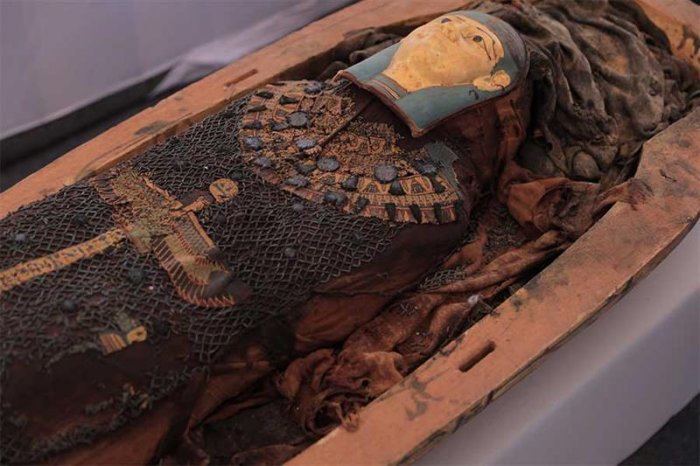
Credit: Supreme Council of Antiquities
As explained earlier on Ancient Pages, Ushabti were servants devoted to working for their deceased owners. In ancient Egyptian religion, the tombs had small-sized and mummy-shaped figurines with arms crossed on the chest. Their use was widespread, and their ‘mission’ was to set the deceased free from the necessity of labor in the afterlife.
On display is also a collection of canopic jars, amulets, mummy masks, and an exceptionally well-preserved papyrus, spanning 13 to 15 feet long and bearing text from the Book of the ᴅᴇᴀᴅ. This papyrus will be transported to the Grand Egyptian Museum for public display.
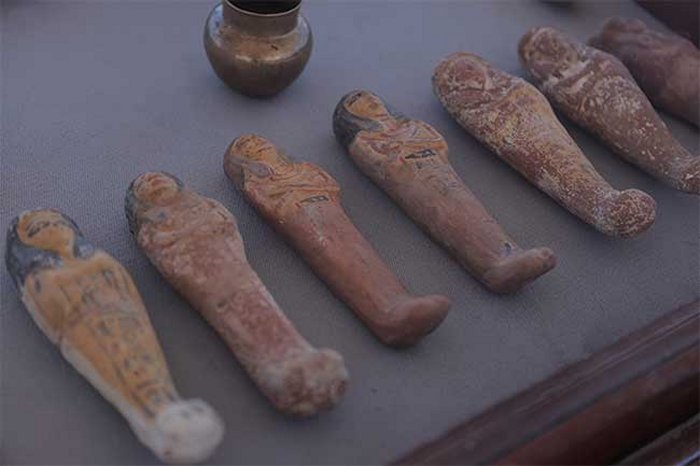
Credit: Supreme Council of Antiquities
All these significant archaeological objects were discovered at the New Kingdom cemetery of the 15th ancient Egyptian nome, said Mostafa Waziri, secretary-general of the Supreme Council of Antiquities.
“While cemeteries from the Old and Middle Kingdoms had been unearthed many years ago, this recent discovery promises to be a significant addition to the annals of archaeology.
The cemetery comprises an array of rock-hewn tombs filled with anthropoid limestone sarcophagi and intricately decorated wooden coffins adorned with religious depictions,” Ahram Online reports.
Waziri said that among the most significant and aesthetically captivating items within this funerary collection are those attributed to Djehuty, the overseer of the Taurus of Amun Temple, and Nany, Djehuty’s singer, along with other high-ranking officials and priests.
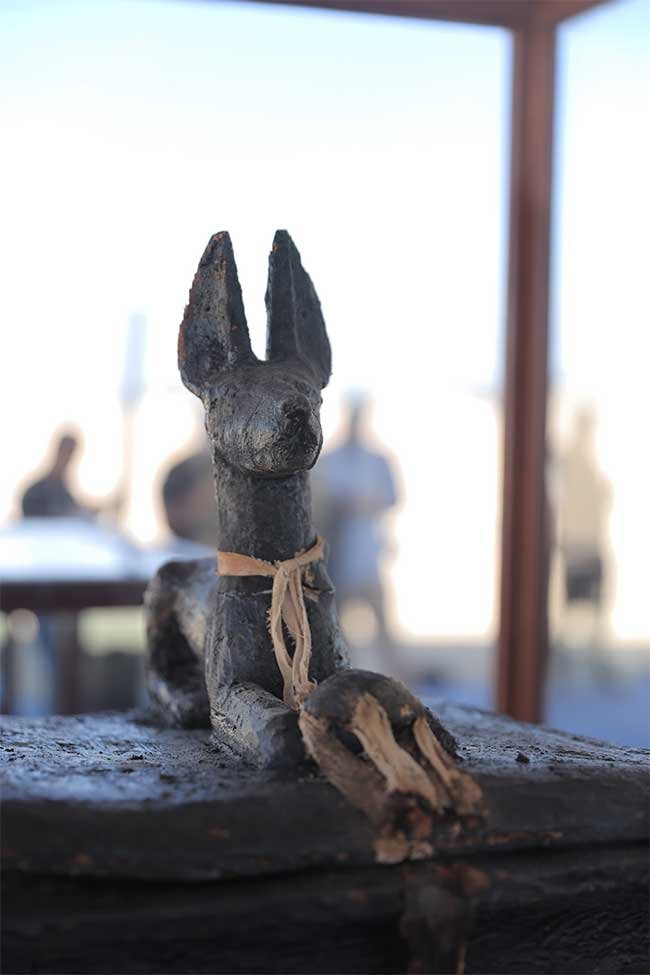
Credit: Supreme Council of Antiquities
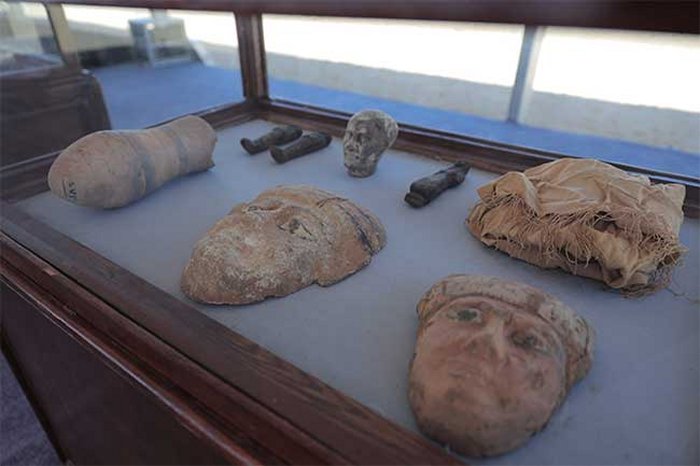
Credit: Supreme Council of Antiquities
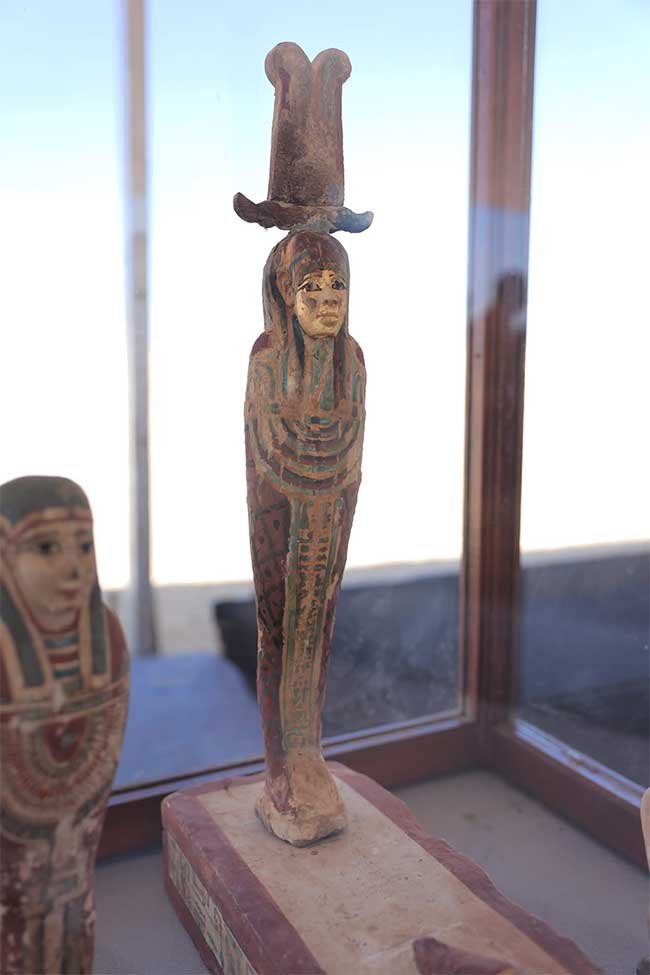
Credit: Supreme Council of Antiquities
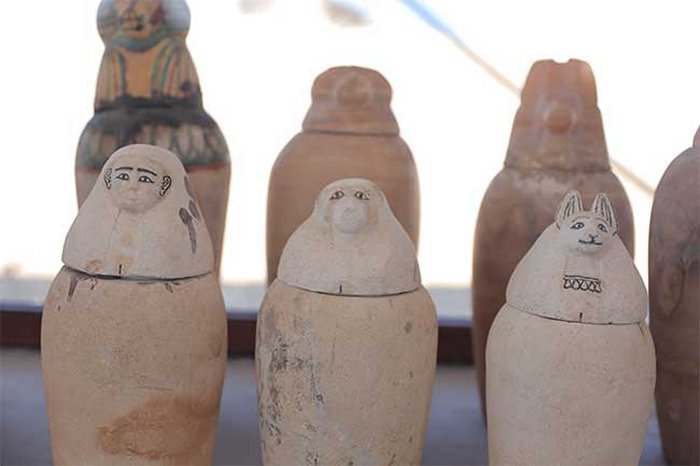
Credit: Supreme Council of Antiquities
Waziri further highlighted the strikingly painted anthropoid coffin of Tadi Essah, the daughter of the High Priest Djehuty, along with its distinguished canopic jars.
Preliminary investigations have revealed that a segment of this cemetery was repurposed during the Late Period (664 BC-332 BC), with thousands of amulets, ushabti figurines, statues, and coffins containing mummies from that era coming to light.
See also: More Archaeology News
The Egyptian mission commenced its excavation work in Al-Ghoreifa in 2017. More excavation is planned to unveil all the secrets of this cemetery.
Written by Conny Waters – AncientPages.com Staff Writer





